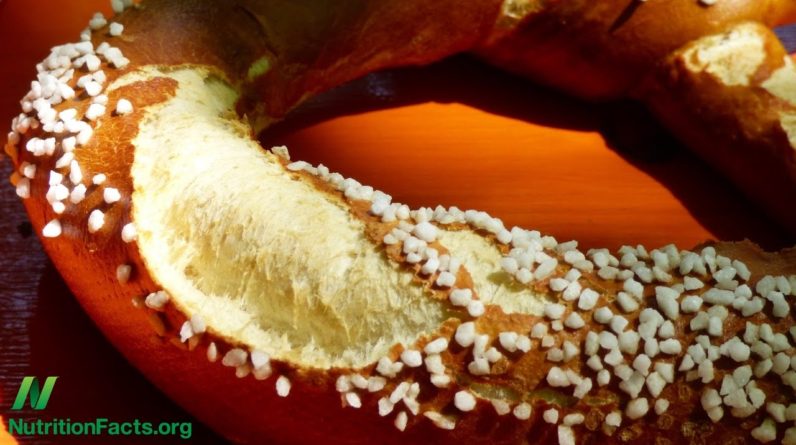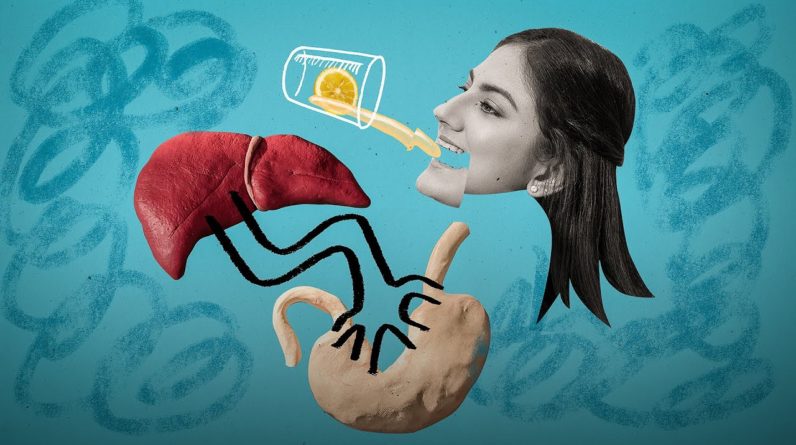
Although the term “lipid” includes several
types of molecules, lipid metabolism usually refers to the breakdown and synthesis of fats. Fats are triglycerides, they are esters of
glycerol and three fatty acids. Fats can come from the diet, from stores in
adipose tissue, or can be synthesized from excess dietary carbohydrates in the liver. Dietary fats are digested mainly in the small
intestine, by the action of bile salts and pancreatic lipase. Bile salts emulsify fats. They act as a detergent, breaking large globules
of fat into smaller micelles, making them more accessible to lipase. Pancreatic lipase then converts triglycerides
into monoglycerides, free fatty acids, and glycerol. These products move into the cells of intestinal
epithelium – the enterocytes, inside which they re-combine again to form triglycerides. Triglycerides are packaged along with cholesterol
into large lipoprotein particles called chylomicrons.
Lipoproteins enable transport of water-insoluble
fats within aqueous environments. Chylomicrons leave the enterocytes, enter
lymphatic capillaries, and eventually pass into the bloodstream, delivering fats to tissues. The walls of blood capillaries have a surface
enzyme called lipoprotein lipase. This enzyme hydrolyzes triglycerides into
fatty acids and glycerol, enabling them to pass through the capillary wall into tissues,
where they are oxidized for energy, or re-esterized for storage. Fats that are synthesized endogenously in
the liver are packed into another type of lipoprotein, the VLDL, to be transported to
tissues, where triglycerides are extracted in the same way. When required, fat stores in adipose tissue
are mobilized for energy production, by the action of hormone-sensitive lipase, which
responds to hormones such as epinephrine. Lipid metabolism pathways are closely connected
to those of carbohydrate metabolism. Glycerol is converted to a glycolysis intermediate,
while fatty acids undergo beta-oxidation to generate acetyl-CoA. Each round of beta-oxidation removes 2 carbons
from the fatty acid chain, releasing one acetyl-CoA, which can then be oxidized in the citric acid
cycle. Beta-oxidation also produces several high-energy
molecules which are fed directly to the electron transport system. Fats yield more energy per unit mass than
carbohydrates.

When acetyl-CoA is produced in excess, it
is diverted to create ketone bodies. During glucose starvation, ketone bodies are
an important source of fuel, especially for the brain. However, ketone bodies are acidic, and when
produced in excess, can overwhelm the buffering capacity of blood plasma, resulting in metabolic
acidosis, which can lead to coma and death. Ketoacidosis is a serious complication of
diabetes, in which cells must oxidize fats for fuel as they cannot utilize glucose. Extreme diets that are excessively low in
carbohydrates and high in fat may also result in ketoacidosis.
On the other hand, diets that are high in
carbohydrates generate excess acetyl-CoA that can be converted into fatty acids. Synthesis of fatty acids from acetyl-CoA is
stimulated by citrate, a marker of energy abundance, and inhibited by excess of fatty
acids. Fatty acids can be converted into triglycerides,
for storage or synthesis of other lipids, by combining with glycerol derived from a
glycolysis intermediate..







